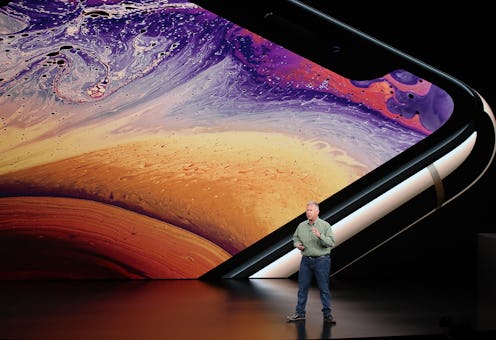
This year’s Apple Keynote brought iPhone-havers extremely exciting news: the iPhone XS and the iPhone XS Max will be the next evolution of your handy iPhone. The Apple Watch series 4 will also deliver some cool new features, such as fall monitoring and built-in electrocardiogram technology. But for those of us who aren’t necessarily looking to upgrade all our hardware, the most exciting announcement was the iOS 12 update, which is slated to bring us enhanced security features, streamlined notifications, and awesome augmented reality apps when it comes out on Sept. 17. But of course, this update comes at a cost — specifically, the emotional cost of taking up precious space on your already-full phone. (Not an actual monetary cost, to be clear — the update, as always, is free.) The iOS 12 update is expected to take up around 2GBs of data, so you may be wondering how to free space on your iPhone to accommodate it.
Most of us will struggle at one point or another with getting rid of excess data on our phone, much like we struggle with offloading unused material items when our closets physically won’t shut. In both cases, I like to remember Japanese organizing guru Marie Kondo’s dictum that all your items — from your shoes to your apps — should spark joy. That means those apps you’ve literally never used, or those four hundred selfie outtakes? Just delete ‘em (duh). But just deleting is tedious and annoying, which is why we don’t do it all the time. These hacks, however, can make it easier to delete, delete, delete, as well as change up how your phone stores your data going forward so you don’t run out of space with your new iOS. Here’s how to do it.
Assess Your Storage Situation
Lifehacker points out that the first step of freeing up space on your iPhone is to do a deep dive into what’s actually taking up that space. Fortunately, iOS 11 has a handy tool to help you with that. Go into Settings, then tap General, then iPhone Storage. You’ll see a bar that indicates how much is on your phone, broken down into categories. Depending on what’s taking up the most room, you’ll want to focus your deletion/curation efforts there. This section of your phone also has easy tools to help you automatically clear out space, like the “Offload App” feature, which de-installs apps you don’t use regularly (but keeps all the data associated with the app). This section will also show you the last time you used the app in question; if it was embarrassingly long ago or even never, you may want to consider deleting it entirely (along with the documents and data that go along with it).
Deal With All Your Photos
The next time you’re stuck on your commute without service, commit to deleting all those thumbnails you never sent to the group chat, or screenshots you don’t need anymore, or any of the other miscellaneous pics we take but don’t actually need to archive. (Make sure to trash all your recently deleted photos afterwards, too.) Then, set aside an hour or two to actually curate what media you *need* to keep on your phone (precious family photos, dog videos, etc.) and what you can upload to your computer or store in a cloud-based service. Don’t forget that anything you’ve uploaded to Instagram (including stories) can live there, too!
Clear Out Old Texts
Your iMessage or WhatsApp chats can be secret sources of tons of data. All those voice memos, meme screenshots, or other media add up over time. Go through your messaging apps and delete old threads you don’t actually need to go back to, as well as the photos, voice memos, or videos you sent through them. If old texts never spark joy for you, you can also set up automatic message deletion in the same zone where you can offload apps.
Get Into The Cloud
You can get a cloud-based storage service (or streaming service) for practically anything these days. Unless you often find yourself without service often, or keep extremely sensitive files on your phone, it may be worth looking into ponying up for cloud-based storage or streaming services.
Deleting data off your phone, just like doing a serious closet edit, is easier said than done. But once you commit to doing it, you may find you feel a lot better afterward — and you'll now have room for that fancy new iOS, too.